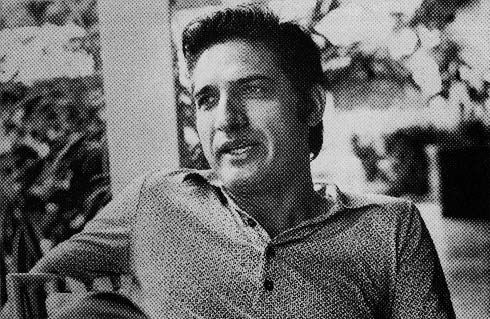by John Dinges
Random House
February 24, 1990
***

Hugo Spadafora Franco
(1940 - 1985)
***
pp. 216-219:
On Saturday morning, September 14, a young Costa Rican peasant, Franklin Vargas, walked across a small wooden bridge near his home just a few hundred yards north of the Panamanian border. He was going after some chickens that had strayed. The locale was known as Laurel de Corredores - a few farmhouses along a dirt road that crossed unrestricted into Panama. Glancing over the side of the bridge, Vargas saw two legs sticking out of the shallow water. The rest of the body was submerged and hidden inside an olive green canvas bag.
The rural police arrived about an hour later and pulled out the body of a tall white man. The man's head had been hacked off. They slogged through the weeds and water and searched the road. Two freshly broken teeth were found, but no head. The bag tied around the body bore the legend "Domestic: U.S. Mail, J 460 1." In the middle of the victim's back, someone had scratched "F-8."
Hugo Spadafora should have arrived by bus in Panama City on Friday night, and when he didn't his father, Carmelo, began to look for him. Ari Spadafora arrived by plane from Costa Rica the next morning. She said that Hugo had left home at eight A.M. on Friday, on his normal route to Panama: commuter plane to a town near the border, taxi to the border, walk across the border to avoid Costa Rican authorities, catch a bus to David and then to Panama City. On Sunday, Ari got some chilling news. Three friends of Hugo's, Panamanian brigadistas who had fought with Spadafora against Somoza and had recently rejoined him to fight with the Miskitos, said they were in a bus going from Panama to Costa Rica and had seen Spadafora taken off a bus at a PDF border post several miles inside Panama on Friday just after noon. Ari and Carmelo quickly obtained a writ of habeas corpus to determine where he was being held.
On Monday, Spadafora's friend Risa Morales went to the San Jose morgue and identified the headless body found near the border as that of Hugo Spadafora. He recognized an old scar on Spadafora's leg. About the same time, Costa Rican police investigators received a copy of Spadafora's fingerprints from Panama and verified that the body was Spadafora's.
Tuesday's La Prensa carried the headline THEY EXECUTED SPADAFORA. Carmelo Spadafora, in a statement, said, "For me and for all our relatives and friends, the macabre murder of Dr. Hugo Spadafora Franco was planned and coldly executed by the chief of G2, Colonel Julio Ow Young, carrying out the orders of the Comandante of the National Guard, General Manuel A. Noriega."
[...]
The grieving face of Spadafora's septuagenarian father on television and in the newspapers had special impact.
[...]
This was not merely hysterical opposition rhetoric. Spadafora's murder was a blow that at once destroyed the already tattered myth of political reconciliation in the tradition of Torrijos and destroyed Panama's unique status as an exception to the violence convulsing Central America.
Thousands of people crowded the runway of Paitilla Airport to receive Spadafora's body when it arrived by small plane from Costa Rica. Although no soldiers were in evidence, the atmosphere was angry.
[...]
The chants were simple demands for "justicia" and emotional proclamations of "presente" whenever someone intoned Hugo's name. The signs scattered throughout the crowd were homemade, with no unified message. In fact, there was little indication of any formal organization, much less orchestration, of the event. Panama was unpracticed in the morbid politics of death that had become second nature to her neighbors - El Salvador, Nicaragua and Honduras - where murder and disappearance were more regular than elections and funerals were a political ritual. In Panama, the last suspected political assassination had occurred more than ten years before. Now, when some in the crowd shouted "Noriega, Asesino" it was as if they were borrowing some other country's vocabulary.
A decapitation; a missing head; a victim so visible, so protected by reputation and past political ties; an atrocity so black it defied even the logic of terrorism: This must be someplace else, people in the crowd said. This can't be happening in Panama.
pp. 229-230:
But the impact of the crime could not be covered up, no matter how embellished with official stamps and quasi-scientific procedures. Spadafora in life had been considered a gadfly, admired for his Quixotic crusades and guerrilla exploits, but hardly taken seriously as a force for political change. In death he came to symbolize the struggle for justice of a people grown so used to deals and compromise that they had to rediscover their own sense of moral outrage. The demand to find and punish those responsible for the murder created a new kind of opposition in Panama, an opposition that was pure and personal, targeted on Manuel Antonio Noriega and untainted by the pettiness of rabiblanco nostalgia for the old days of unchallenged rule by the elite.
It was of unmistakable significance that the first formidable challenge to Noriega's rule developed around a dead hero of Torrijismo, not out of the traditional opposition. When Spadafora was buried, eighty thousand people overwhelmed the streets of provincial Chitre to attend the funeral. While no one rallied to protest the overthrow of Barletta, hundreds and sometimes thousands gathered regularly to keep alive the demand for an honest investigation of Spadafora's death.
Noriega murdered many. Now the US govt. holds him illegally. A fitting end for a dictator. He does not deserve democratic justice.
ReplyDeleteOne of the many murdered by Noriega. I hope Noriega rots in jail.
ReplyDeleteI'am from PANAMA and I now that Noriega murdered many,had deals with U.S.A ,COLOMBIA,CUBA,and other countries he was not a dictator he was an assassin,and the devil;s favorite cause he also practiced budu
ReplyDelete